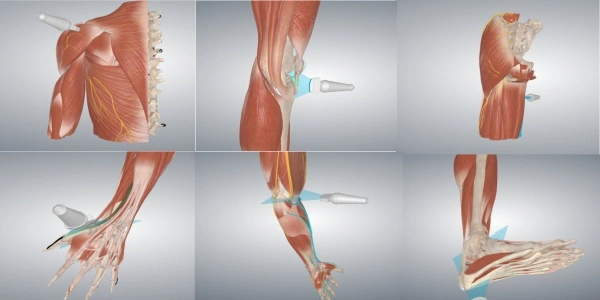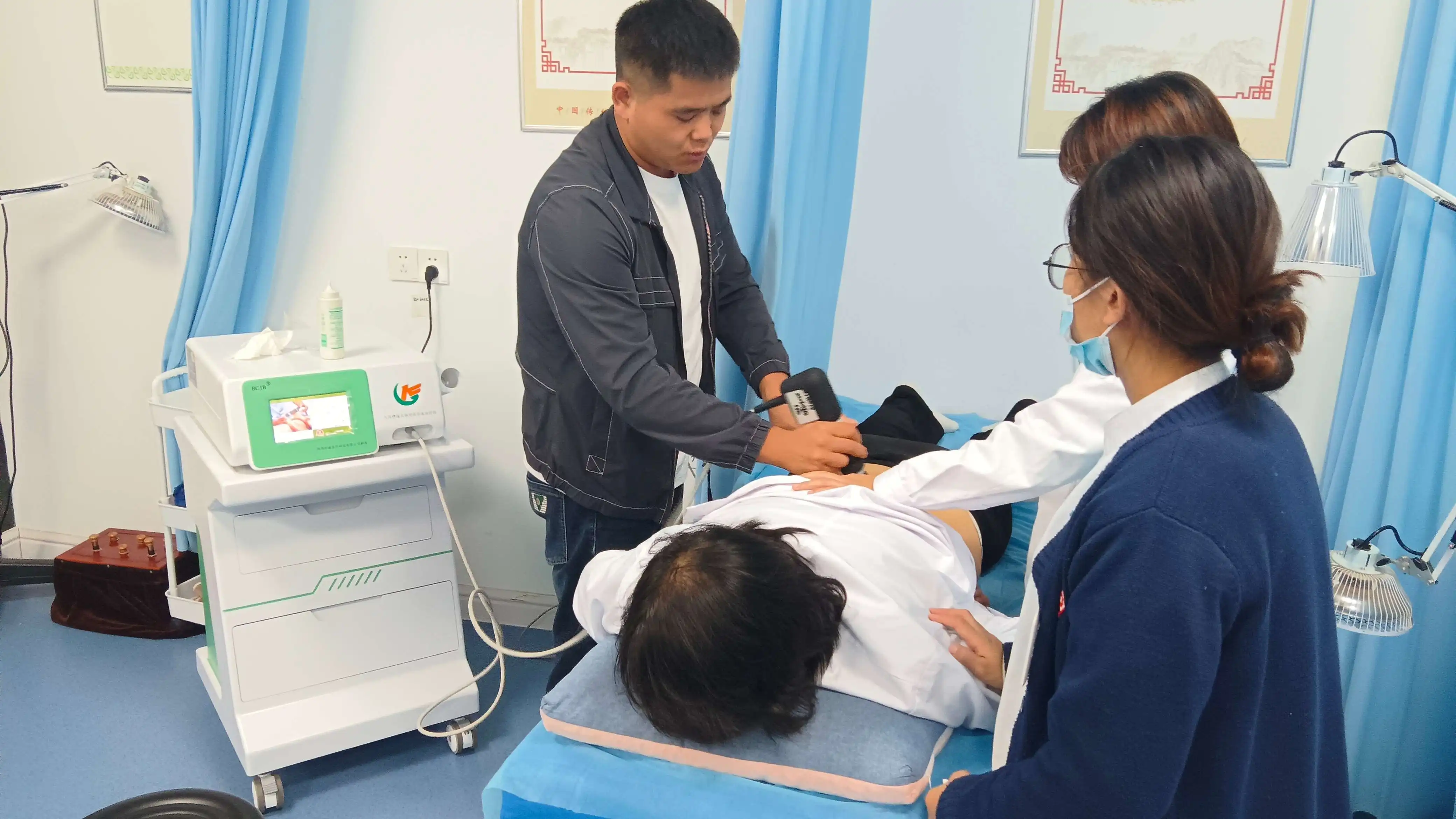In the world of modern medicine, extracorporeal shockwave therapy (ESWT) has become a popular treatment option for a variety of conditions, with the Extracorporeal Shockwave Therapy Device at the forefront of this innovation. As patients and healthcare providers explore the potential of this therapy, one of the most common questions that arises is: how many sessions are actually required to achieve optimal results? Let's take a closer look at the factors that influence the number of sessions needed.

Understanding the Extracorporeal Shockwave Therapy Device
The Extracorporeal Shockwave Therapy Device is a remarkable piece of technology. It functions by generating focused shock waves outside the body that are then precisely directed at the target area. These shock waves can penetrate deep into the tissues, triggering a cascade of biological responses. For instance, in the treatment of musculoskeletal disorders like tendonitis or plantar fasciitis, the device sends shock waves to the affected tendon or fascia. This helps break up fibrotic tissue, increases blood flow, and jumpstarts the body's natural healing mechanisms. In the realm of urology, it's being explored for conditions such as erectile dysfunction, where the shock waves can potentially enhance penile blood flow and stimulate the growth of new blood vessels.
Factors Affecting the Required Number of Sessions
Severity of the Condition: The severity of the underlying condition is a crucial determinant. In mild cases of tendonitis, perhaps where the pain has just started and there's minimal tissue damage, fewer sessions may be sufficient. For example, a patient with a recent onset of tennis elbow who catches it early might only need 3 to 5 sessions. However, in more severe and chronic cases, like long-standing plantar fasciitis that has persisted for months or even years, the body has had more time to develop extensive scar tissue and reduced blood flow. In such instances, it could take anywhere from 8 to 15 sessions or more to see significant improvement. The more damaged the tissues, the more time and repeated stimulation with the shockwaves are needed to reverse the situation.
Patient's Overall Health and Healing Capacity: Individual differences in overall health play a significant role. A younger, generally healthy patient with a strong immune system and good blood circulation is likely to respond more quickly to the treatment. Their body can better utilize the benefits of the shockwave therapy, potentially reducing the number of sessions required. In contrast, an elderly patient or someone with underlying health issues, such as diabetes or poor vascular function, may take longer to heal. Diabetes, for instance, can impair blood flow and slow down the body's natural repair processes, meaning more sessions – perhaps an additional 2 to 5 sessions compared to a healthy counterpart – might be necessary to achieve the same level of relief.
Treatment Goals: The intended outcome of the treatment also dictates the session count. If the goal is simply to provide short-term pain relief, a fewer number of sessions may be enough. For example, a patient who has an upcoming event and just wants to get through a week without severe pain in their Achilles tendon due to a minor strain might opt for 2 to 3 sessions focused on immediate symptom management. However, if the aim is to achieve long-term healing and prevent recurrence, a more comprehensive treatment plan with a higher number of sessions will be required. In cases of erectile dysfunction, where the goal is to improve sexual function on a sustainable basis, a series of 6 to 10 sessions spread over a few months is often recommended to allow for proper tissue regeneration and vascular improvement.
Clinical Protocols and Research Findings
Medical research and clinical experience have provided some general guidelines. In orthopedics, for common tendon and fascia injuries, most protocols suggest an initial series of 6 to 8 sessions, spaced about a week apart. This spacing allows the body time to respond to each treatment and initiate the healing process. After the initial series, a reassessment is typically done. If significant progress has been made but further improvement is still needed, an additional 2 to 4 "booster" sessions may be added, with a longer interval, say 2 to 3 weeks, between them.
In the urological application for erectile dysfunction, clinical trials have shown that a consistent treatment plan of 8 to 10 sessions, each lasting around 20 minutes, over a period of 2 to 3 months can yield positive results in a significant percentage of patients. These sessions are carefully calibrated to deliver the appropriate energy and frequency of shock waves to the penile tissues, stimulating the growth of new blood vessels and enhancing erectile function.
The Importance of Professional Assessment
Given the variability in the number of sessions needed, a professional assessment by a trained healthcare provider is essential. They will take into account all the factors mentioned above, including the patient's medical history, current condition, and treatment goals. Using their expertise, they can customize a treatment plan that maximizes the effectiveness of the Extracorporeal Shockwave Therapy Device. A misjudgment in the number of sessions – either too few, leading to incomplete treatment, or too many, potentially causing unnecessary discomfort and cost – can undermine the overall success of the therapy.

Shaanxi Miaokang Medical Technology Co., Ltd had R&d and produce Extracorporeal Shockwave Therapy Device
is a comprehensive integrator engaged in medical instrument research and development, sales, medical technology research and promotion, and investment in medical institutions. The main research and development of medical ozone therapy equipment, extracorporeal shock wave therapy equipment and other products.
If you had any questions,feel free to contact us:Cathy@miaokang.ltd
Conclusion
So, how many sessions of shockwave therapy do you need? There's no one-size-fits-all answer. It depends on multiple factors, from the severity of the condition and the patient's overall health to the specific treatment goals. While general clinical guidelines exist, a personalized approach, guided by a professional, is crucial to ensure that the right number of sessions with the Extracorporeal Shockwave Therapy Device are administered. By understanding these nuances, patients can make more informed decisions about their treatment journey, and healthcare providers can optimize the use of this innovative therapy to help patients achieve the best possible outcomes. Whether you're seeking relief from chronic pain or exploring solutions for a specific medical condition, knowing the ins and outs of session requirements is the first step towards successful shockwave therapy.






